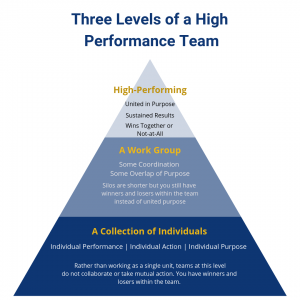— May 4, 2019
There’s a lot to be learned from mobile games. They’ve got sparking excitement and inspiring customer action down to a science. And by continually adding multiple levels of benefits and incentives to app experiences, and acting on needs at the exact moments that really matter, today’s mobile games are driving loyalty and giving players more reasons to keep returning to the game.
And behind all this is a concept called live operations or live ops. I’d like to dive into the benefits of implementing live ops and share how it drives revenue growth for companies outside of gaming.
What is Live Ops?
Live Ops, is now an essential part of most successful games, despite being relatively new to the scene. While it’s hard to place a firm definition on it, on the surface, it’s very simple: live ops is a dynamic approach to the running of a live game. It’s one that allows the making of adjustments based on data to optimize player experiences in real time, and in turn keeps players coming back and spending money. But it’s much more than that—it’s a whole mindset that is actively shaping the future of gaming.
The Benefits of Live Ops
The benefits of employing live ops techniques are multi-faceted. Not only does it keep players engaged and retained by delivering new content, live events, and frequent updates, but through the deep understanding of player behavior, long-term player communities are developed. This significantly extends a game’s lifespan, and as a result provides a far higher return on development and marketing investments. This lean approach also enables games to be released quicker, as they can be changed and grown after the launch, under the mantra Build, Measure, Learn (and repeat).
Live Ops Toolkit
So, how do live ops teams achieve this? Let’s take a look at some of the tools they use to carry out the task at hand:
Real-time Data and Analytics: Key to live ops are real-time data and analytics, and a deep understanding of these can really influence performance. Viewing performance as it occurs live is essential for identifying and acting on issues affecting success. And monitoring KPIs carefully over time, like ARPU (average revenue per user), ARPPU (average revenue per paying user), retention, and LTV (lifetime value), to name just a few, sets a solid base from which to make decisions on how to improve performance.
Hyper Relevant Segmentation: Being able to provide different experiences and messaging based on what an individual player has done in a game is now essential. For instance, you don’t want a long-term, high-spending VIP player to receive a message or offer that is intended for a first time player. Custom segments help to bring more relevance to messaging, and this kind of targeting is only growing more powerful as Swrve’s BI-level targeting helps you build the most sophisticated audiences yet, based on player behavior.
A/B Testing: Using analytics and segmentation to influence your monetization strategy will greatly boost your game revenue, but experimenting through A/B testing will really supercharge your game’s success. A/B test everything from price points, to store layout, and even game difficulty to find out definitively (through cold, hard data) which variant provides the optimal return across your KPIs.
Beyond Games
Swrve is the perfect tool for live ops, and it’s reflected in our track record of working with the biggest and best games companies over the past decade. The Live ops model can and should be adopted by all industries, and is reflected in our work with some of the world’s largest airlines, telcos, publishers, retailers, and financial institutions. The simple premise of using data to adjust digital experiences and marketing in real time, improves KPIs exponentially, and as we continue to shout this from the rooftops, this is what our era of real-time relevance is all about.
Business & Finance Articles on Business 2 Community
(68)
Report Post





